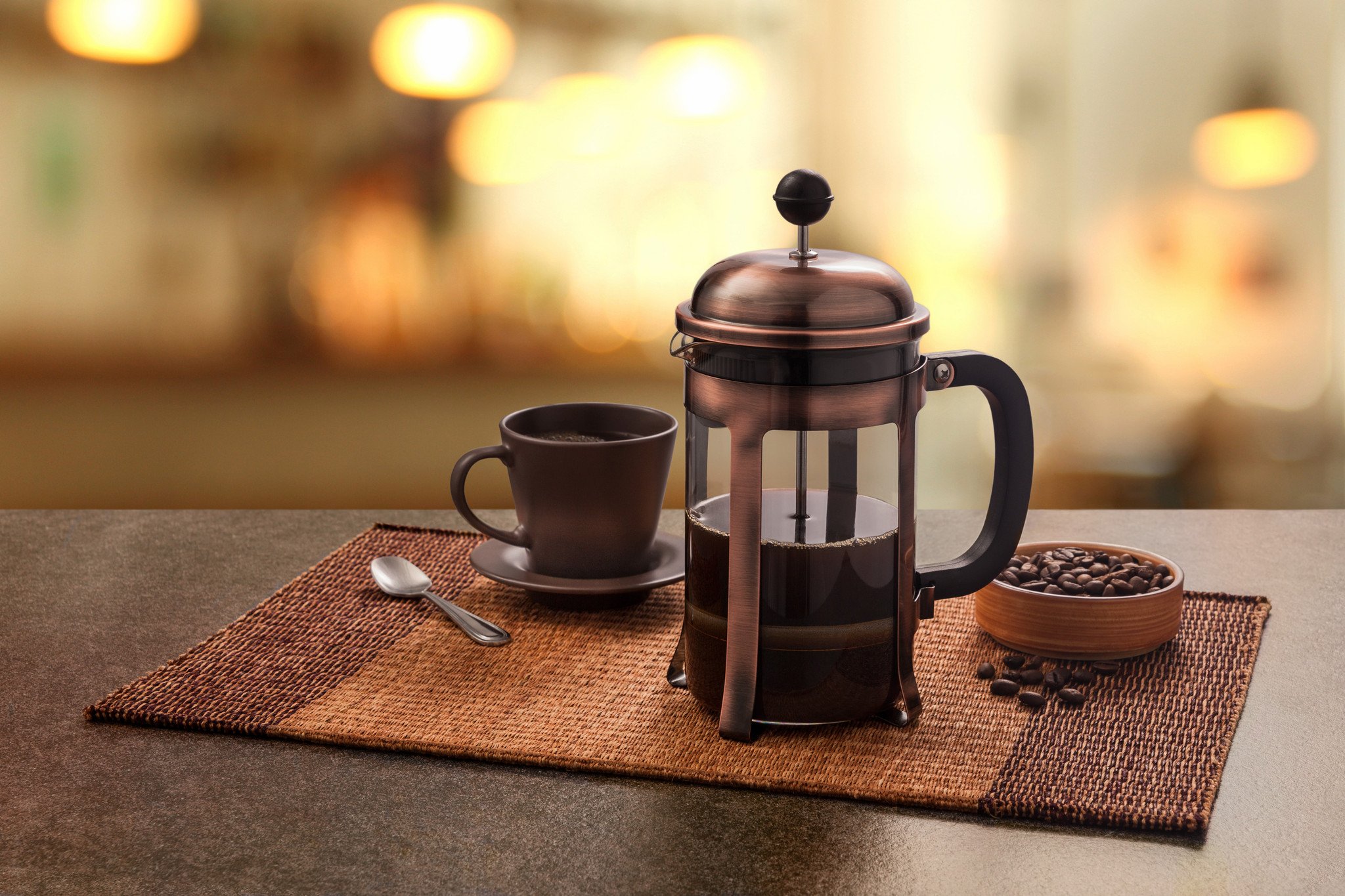Shopping Bag
0
- No products in the cart.

The French press, also known as a cafetière or coffee plunger, is probably the most underrated method of brewing coffee. It is cheap, easy, repeatable and just about everyone has one at home. Considering its name, it seems somewhat surprising to discover that the most familiar version of the French press was invented and patented by an Italian called Attilio Calimani in 1929. However, a very similar brewer had been patented first by two Frenchmen, Mayer and Delforge, in 1852. A French press is an infusion brewer.
With most methods of brewing coffee, the water passes through the grounds. Here the water and coffee steep together, which helps produce a more uniform extraction. The other relatively unique aspect of the French press is the way that it filters the grounds from the brewing liquid: by using a metal mesh. Due to the relatively large holes in the mesh, more of the non-soluble material from the coffee gets into the cup.
The advantage of this is you get a little of the coffee oil and some tiny suspended pieces of coffee in the cup, which gives the resulting brew a bigger, richer body and texture.
The disadvantage is what puts many people off of the French press: the sludge. At the bottom of the cup you will often find a reasonable quantity of silty particles of coffee that (if accidentally drunk) are quite unpleasant and sandy in the mouth.
Free Shipping On All Orders $200+ |
